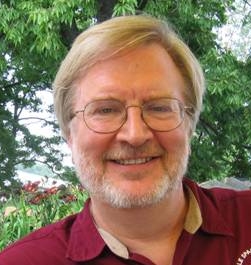 Dr. Thronson’s
responsibilities include identification, assessment, and advocacy for advanced human/robotic programs at NASA Goddard Space Flight Center in coordination with other NASA Centers and industry.
Dr. Thronson’s
responsibilities include identification, assessment, and advocacy for advanced human/robotic programs at NASA Goddard Space Flight Center in coordination with other NASA Centers and industry.
Systems Engineering Seminar
Lessons for Constellation from HST:
Adapting Human Spaceflight Vehicles to Achieve Multiple Goals in Space
Presented by:
Harley Thronson,
Associate Director for Advanced Concepts and Planning
Science and Exploration Directorate, NASA GSFC
February 5, 2008, 1:00 p.m.
Building 3 Auditorium
Abstract:
Lessons for Constellation from HST:
Adapting Human Spaceflight Vehicles to Achieve Multiple Goals in Space
Not long after the development of major elements of the Apollo program in the mid-1960's, engineers, managers, and scientists began to explore how those elements might be adapted to achieve additional priority national goals in space. Perhaps the best-known of these activities was the Apollo Applications Program, which in 1965 designed a modified lunar module that would permit astronaut-tended solar and astronomical observations in low Earth orbit. Although never flown, many of the concepts evolved into Skylab, humanity's first space station. It was also arguably the most successful early demonstration of using astronauts and augmented human spaceflight hardware to achieve major goals in space that were not originally considered. Similarly almost a decade later, engineers and scientists who recognized possibilities of the Space Shuttle advocated for additional capabilities not originally intended for the mission. In turn, these early initiatives eventually made possible missions such as HST servicing, which probably remains the most publicly appealing and scientifically productive application of astronauts.
In this presentation, I will summarize these early efforts to extend the application of human spaceflight vehicles and the lessons that might be drawn for current elements of the Constellation program. I will discuss some of the concepts that have been proposed to use Ares launch vehicles and the Orion Crew Exploration Vehicle to accomplish major national science goals in space in addition to replacing the Space Shuttle and returning humans to the lunar surface.
Biographies:
Previously, while working at NASA HQ, he was responsible for selection and development of advanced technologies that will significantly enhance future science missions such as large astronomical observatories in space and robotic missions to Mars, other planets, and the Moon. He has also served as the program scientist for the Hubble Space Telescope (HST), the Spitzer Space Telescope (SIRTF), and the James Webb Space Telescope (JWST). Over the past few years, he has served as senior scientist on a variety of long-range planning activities and led NASA HQ teams that developed science and technology priorities for President George Bush’s Vision for Space Exploration.
Dr. Thronson received his Ph.D. in astrophysics in 1978 from the University of Chicago and has been a faculty member and on the senior staff of the Universities of Arizona and Wyoming, and the Royal Observatory, Edinburgh. He has published more than 100 research papers and co-edited 11 books.